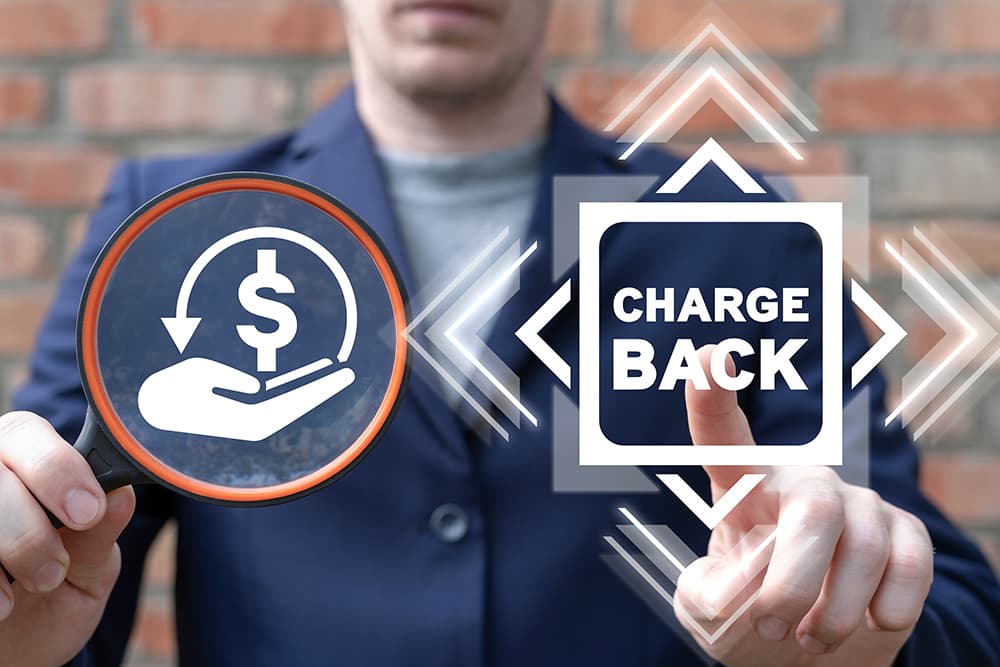Chargeback Ratios, and How to Improve Them

A chargeback occurs when a customer requests a refund directly through their issuing bank after purchasing a product or service. These fund reversals can happen for numerous reasons, ranging from buyer’s remorse or customer confusion to outright fraud.
More than just a reversed transaction, a chargeback represents a dissatisfied customer and a direct financial loss. But the impact escalates far beyond individual disputes.
Merchants are judged by their chargeback ratio, a key performance indicator that payment networks like Visa scrutinize to measure a business's health and risk level.
A high chargeback ratio can lead to severe consequences, including hefty fines, increased processing fees, and even the termination of your merchant account.
Understanding this metric, and a major new program that governs it, is no longer optional; it's essential for survival and growth.
Understanding chargeback ratios
At its core, a chargeback ratio is a simple formula:
Chargeback Ratio = (Total Number of Chargebacks in a Given Month / Total Number of Transactions in That Same Month) ×100
This percentage serves as a clear barometer of how frequently a merchant's transactions result in a dispute. While a small number of chargebacks is inevitable, a consistently rising ratio signals underlying problems in a merchant's operations, from customer service to fraud prevention.
The Visa Acquirer Monitoring Program (VAMP)
To streamline its oversight process, Visa has implemented the Visa Acquirer Monitoring Program (VAMP), which officially replaced its separate fraud and dispute programs in April 2025. This new framework represents a significant shift in how merchants are monitored and is directly tied to their dispute data.
Under VAMP, Visa consolidates both fraud reports (known as TC40 data) and non-fraud disputes into a single, unified VAMP ratio. This gives Visa a more holistic view of a merchant's overall risk profile.
As of mid-2025, merchants are typically placed in the "Excessive" category if their VAMP ratio exceeds 2.2%, and they have at least 1,500 dispute/fraud incidents.
This threshold is scheduled to become more stringent, dropping to 1.5% on April 1, 2026. While an advisory period without fines is in place until October 1, 2025, merchants who fail to bring their ratios under control will face significant penalties thereafter.
Strategies to improve your chargeback ratio
Lowering your chargeback ratio requires a multi-faceted approach. It's about being proactive rather than reactive.
Strengthen fraud prevention protocols
A significant portion of chargebacks stems from fraudulent transactions. Because of VAMP’s influence, businesses should take extra steps to reduce fraud. Implementing a layered security approach is the first line of defense.
Utilize AVS and CVV. Always require the Address Verification Service (AVS) and Card Verification Value (CVV) for all transactions.
Implement 3-D Secure. Use advanced authentication tools like 3-D Secure to add a crucial layer of security that shifts liability for certain fraudulent chargebacks away from the merchant.
Employ anti-fraud software. Use advanced tools that analyze transactions for high-risk indicators, such as location mismatches or unusual purchasing patterns.
Enhance customer service and communication
Many chargebacks are the result of poor communication or friendly fraud, where a legitimate customer disputes a charge out of confusion or frustration. These can be improved by implementing the following strategies:
Clear billing descriptors. Ensure your billing descriptor (the name that appears on a customer's card statement) is easily recognizable. A vague descriptor is a common cause of disputes.
Transparent policies. Make your return, refund, and cancellation policies easy to find and understand.
Accessible support. Provide excellent, responsive customer service through multiple channels (phone, email, chat). A customer who can easily get a refund from you is far less likely to file a chargeback with their bank.
Manage your chargeback risk
Payment risk management is another priority that VAMP deftly confronts. It holds acquirers responsible for ensuring that their merchant partners remain below pre-set thresholds.
If chargeback ratios exceed the limits, fines are levied on acquirers, who pass them on to merchants. Should violations continue, penalties are often increased.
This provides a strong incentive for acquiring institutions and companies to minimize chargeback risks.
Resolve disputes
The industry has developed tools designed to intercept disputes before they become official chargebacks.
This can be done via Visa’s Rapid Dispute Resolution (RDR) automated tool and the Cardholder Dispute Resolution (CDR) network. These allow the merchant to provide proactive resolution.
Visa's Rapid Dispute Resolution (RDR) is a pre-dispute resolution tool. However, under the new VAMP rules, it's crucial to understand that while resolving a dispute via RDR can prevent a non-fraud chargeback, fraud-related disputes (TC40s) resolved this way may still count toward your VAMP ratio.
Chargeback alerts, when a cardholder initiates a dispute, can give the merchant a window to issue a refund and avoid the chargeback.
Conclusion
Whether you partner with a high-risk merchant provider or invest in the services of a conventional financial institution, chargebacks are an unfortunate fact of life for modern businesses.
The VAMP framework is making it easier for merchants of all types and risk levels to lower their chargeback ratios. As a result, they can provide customers with a consistently clear and secure payment experience.






















